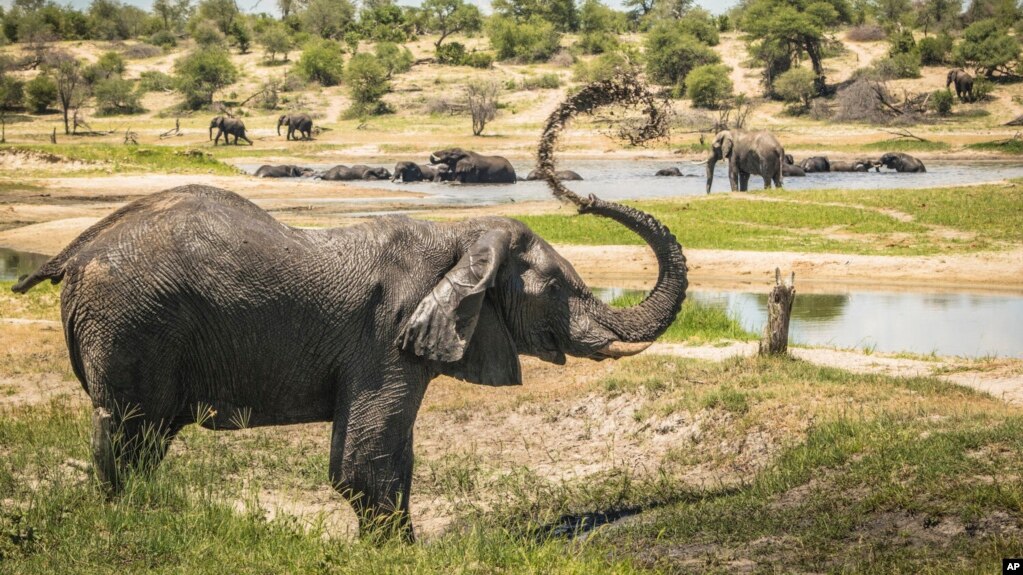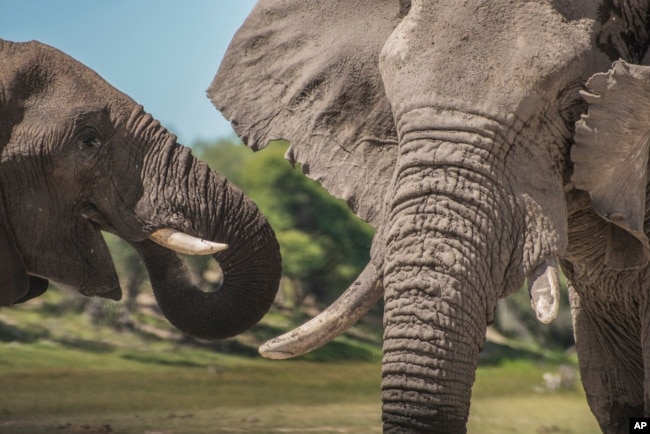雄の役割;象社会
このタイトルから、日本のお父さん像が思い浮かんでしましました。孤独そう?
記事の中身は
家族、役割。偉いじゃん!!雄ゾウ!!
種別を問わず、
頑張れお父さん!!
オスゾウ、結局のところ孤独ではない
Male Elephants Are Not Loners After All
ボツワナ北部の一帯を歩くゾウの群れ。ゾウの耳は動き、胴体が地面に触れることもあります。彼らが通り過ぎるとき、低い植物の中に隠れているカメラが、それぞれの象の存在を記録します。
このグループの何が特別なのでしょうか?それは、オスだけ。
メスゾウは、経験豊富なメスがリーダーとなって家族のようなグループを形成することで知られています。
オスは一匹狼、つまり一人でいることが多い生き物だと考えられていました。彼らは10歳から20歳になると、母親の群れから離れることが多いのです。
しかし、新しい研究では、若いオスが必ずしも一匹狼とは限らないことが明らかになりました。
若いオスのゾウは、場所から場所へと移動する際に、年配のオスの後をついていくのが目撃されています。この発見は、年上のオスがゾウの複雑な社会で重要な役割を果たしていることを示唆する他の研究を裏付けています。
この研究はScientific Reports誌に最近発表されました。研究者たちは、アフリカゾウのオス1,264頭の目撃情報のビデオを調査したのです。象は2017年と2018年にボツワナのボテチ川に向かって移動していました。研究者らは、若いオスが単独で旅をすることはほとんどないことを発見したのです。年配のオスは、年齢が混ざったグループを率いて移動することが多かったのです。
ダイアナ・ライス氏はハンターカレッジの動物行動・保全プログラムのディレクターです。ライス氏は今回の新しい研究には関与していません。
「成熟したオスのゾウは、グループを率いているときには、しばしば先頭に立つことが多い のです」と彼女は言います。
「人間社会では、祖父母が育児を手伝ったり、何十年にもわたって得た知識を伝えたりと、本当に重要な貢献をしているので評価されています。。。このパターンはイルカやクジラ、ゾウなどの長寿哺乳類にも当てはまることがわかってきました。」とライス氏は付け加えています。
これは、アフリカのサバンナゾウを対象としたこの種の最初の研究です。2019年の論文では、アジアゾウの間で同様の雄の集団行動を見つけるためにカメラも使用されました。
イギリスのエクセター大学の生物学者コニー・アレン氏は、科学者たちは長い間、メスゾウの群れの繁殖についてより多くのことを知っていたと述べています。
アレン氏は今回の論文の共同執筆者です。彼女は、オスは複雑な社会生活を送っており、その集団は家族の絆だけで形作られているわけではないと付け加えています。
1990年代半ばに南アフリカのピラネスバーグの公園に数頭の若いオスの象が導入されたとき、彼らは非常に攻撃的でした。彼らは40頭のシロサイを殺してしまったのです。しかし、6頭の年配のオスゾウが公園に加えられてから、彼らの行動は変化しました。
「ある意味で、年長のオスは秩序を作っているのです」と、ストーニーブルック大学の生態学者カール・サフィナ氏は言います。サフィナ氏はまた、新しい研究には関与していません。
成熟したオスの象はより大きく、長い牙(口から突き出た大きな歯のようなもの)を持っています。アフリカでは合法・非合法を問わず、しばしばハンターの標的にされています。
アレン氏は、今後の保護計画では、年配のオスが果たす役割を考慮すべきだと言います。オスはより神秘的です、”しかし、一匹狼ではないことがわかりました”と語ってくれました。
Male Elephants Are Not Loners After All
 In this 2016 photo provided by researcher Connie Allen, male African elephants congregate along hotspots of social activity on the Boteti River in Botswana. (Connie Allen via AP)
In this 2016 photo provided by researcher Connie Allen, male African elephants congregate along hotspots of social activity on the Boteti River in Botswana. (Connie Allen via AP)
A group of elephants walk across an area in northern Botswana. Their ears move and their trunks sometimes touch the ground. As they pass, a camera, hidden in low plants, records the presence of each elephant.
What is special about this group? It is only males.
Female elephants are known to form tight family groups that are led by experienced females.
Males were thought to be loners - creatures that are often alone. They often leave their mother’s herd when they reach 10 to 20 years of age.
However, a new study shows that young males are not always loners.
Younger male elephants were seen following older males as they traveled from place to place. The findings support other research that suggests older males play an important part in elephants’ complex society.
The study was published recently in Scientific Reports. Researchers studied videos of 1,264 sightings of male African elephants. The elephants were traveling toward Botswana’s Boteti River in 2017 and 2018. They found that younger males rarely traveled alone. Older males most often led groups of mixed ages.
Diana Reiss is the director of the Animal Behavior and Conservation Program at Hunter College. Reiss was not involved in the new study.
“Mature male elephants often take a position at the front of the line when they are leading the group,” she said.
Reiss added, “In human societies, grandparents are valued because they make really important contributions — helping with childcare and passing down knowledge gained over decades...We’re now learning this pattern is also true for some other long-lived mammals, including dolphins, whales and elephants.”
This is the first study of African savannah elephants of its kind. A 2019 paper also used cameras to find similar male group actions among Asian elephants.
Scientists have long known more about breeding herds of female elephants, said Connie Allen, a biologist at the University of Exeter in Britain.
Allen was a co-writer of the new paper. She added that males have complex social lives, and their groupings are not only shaped by family ties.
When several young male elephants were introduced into a park in Pilanesberg, South Africa in the mid-1990s, they were very aggressive. They killed 40 white rhinoceros. But their behavior changed after six older male elephants were added to the park.
“In some way, the older males create order,” said Carl Safina, an ecologist at Stony Brook University. Safina also was not involved in the new study.
Mature male elephants are larger and have longer tusks – a kind of large tooth that sticks out of the mouth. They are often the target of hunters – both legal and illegal – in Africa.
Allen said that future conservation plans should consider the part that older males play. Males are more mysterious, she said, “but it turns out they aren’t such loners.”
_____________________________________________________________
Words in This Story
trunk – n. the long, flexible nose of an elephant
herd – n. a group of animals that live or are kept together
mature – adj. not young : middle-aged or older
contribution – n. the act of giving something : the act of contributing
pattern – n. the regular and repeated way in which something happens or is done
breeding –n. the process by which animals produce and care for their young; related to producing and caring for the young
conservation – n. the protection of animals, plants, and natural resources
